>Originally posted July 18, 2007.
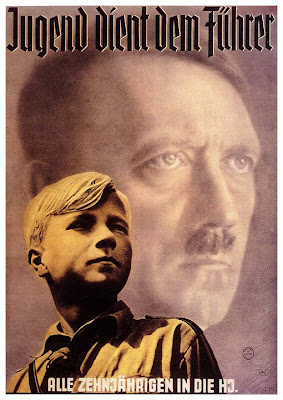
Part One (UK) and Part Two (USA) of these series.
—
Most nations would stop fighting when realizing there’s no chance of winning the war. Germany didn’t. They continued to fight long after they had abandoned all hope. I’d say this had very much to do with propaganda. And very much with a certain doctor.
On March 13, 1933, the Ministry for Popular Enlightenment and Propaganda was founded under the direction of Dr. Josef Goebbels. No such thing had ever existed before, in Germany or in any other country. This was the time of the awakening of the (uneducated) masses.
Adolf Hitler had read Lord Northcliffe: “The bombardment of the German mind was almost as important as the bombardment by cannon”.
In Mein Kampf he writes:
“The psyche of the masses is not receptive to anything that is weak. They are like a woman, whose psychic state is determined less by abstract reason than by emotional longing for a strong force which will complement her nature. Likewise, the masses love a commander, and despise a petitioner”. One could say Hitler despised the masses…
He is also quoted saying:
“Haven’t you ever seen a crowd collecting to watch a street brawl? Brutality and physical strenght is what they respect. The man in the street respects nothing more than strenght and ruthlessness – women too for that matter. The masses need something that will give them a thrill of horror”.
Hitler argued that propaganda must be adressed to the emotions and not to the intellect. He had no need for educating the already educated. He spoke in black and white, and with enormous power and energy – always emotional.
With Goebbels as head of propaganda the Nazis rose to power. Goebbels described Hitler’s speeches as “religion in the most mysterious and deepest sense of the word”. He truly admired his Führer. And they used these very personal words – his Führer, my Führer – never the Führer; because it was a relationship, bonded by blood.
The propaganda machine worked the hardest at the mass gatherings. Each single individual underwent, in Goebbels words, “a kind of metamorphosis from a little worm to a giant dragon”. These huge demonstrations mostly took place at night when people’s minds were most open to persuasion. At the annual rally in Nuremberg half a million people attended to gather strenght.
Albert Speer was responsible for the art direction at the rallies, and the “cathedral of light” was his idea: 130 anti-aircraft searchlights placed around the rally field at intervals of forty feet. The huge eagle (over 100 feet in wingspread) was also one of Speer’s brilliant creations.
When the Second World War started, the Propaganda Ministry had complete control of the press, radio, film, posters, art, literature, music, theater… It is therefore nothing strange with people acting as they did. When every contemporay book you read, every newspaper, every film you see, every broadcast you hear for years and years, always with the same spirit, the same propaganda, you definitely lose your judgment.
Goebbels particularly enjoyed the cinema. He realized that this new art form could reach a far wider audience than books or theater. The old Motion Picture Law was replaced by the Reich Motion Picture Law in 1920, and from that moment nothing was approved that ran counter to the spirit of the times.
You’ve all seen Triumph of The Will (1935), and maybe even Olympia (1938), Leni Riefenstahl’s masterpieces of truly great art. There’ so much to say about those movies, but I intended these posts to be about the poster art, so… Maybe another time.
People may forget an article, but they won’t forget a picture, especially when they see it often, everywhere, and when the message is pure and strong, black and white. A flyer could be thrown away, the radio turned off, the political meetings not attended… Everybody walks the streets, though. The poster could not be avoided. Graffiti artists use this direct method as well.
The master of Nazi propaganda posters was named “Mjölnir” (real name: Hans Schweitzer). “What lenghty speeches failed to do, Mjölnir did in a second through the glowing fanaticism of his powerful art”, as one Nazi leader put it.
Personally, I find the Nazi propaganda the most fascinating, and certainly the most beautiful, dark, powerful and striking. Maybe this has to do with me too being totally intoxicated by their visual force? However, I am not alone. The Nazi propaganda resulted in billions of artifacts inspired by the powerful art of persuasion (hello Dyanne Thorne!).
Bonus propaganda:
Goebbels assembled a swing band called Charlie and His Orchestra to perform Nazified versions of the jazz hits of the day! How about that?
First volume of their music
Second volume of their music
And now, the magic of the mystic art…
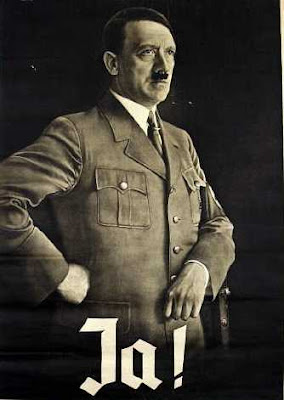
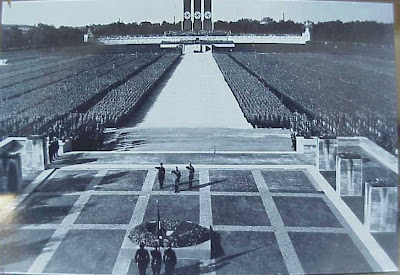
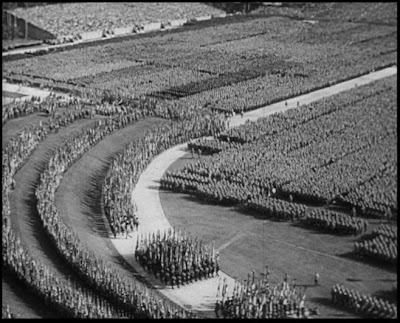
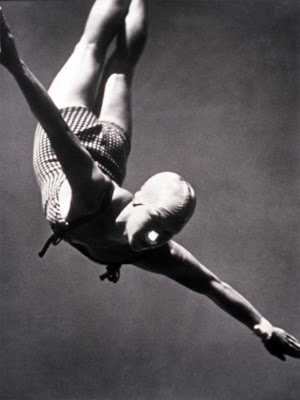
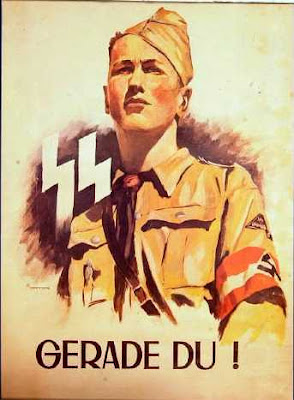
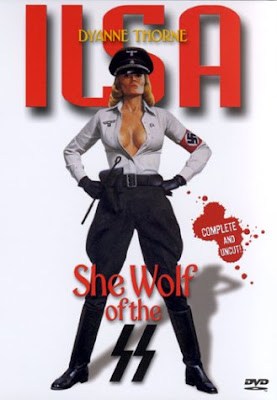
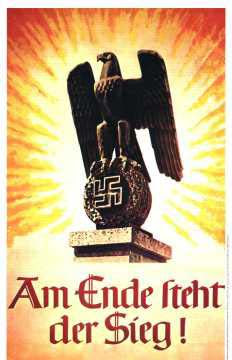
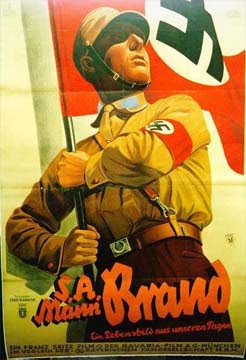
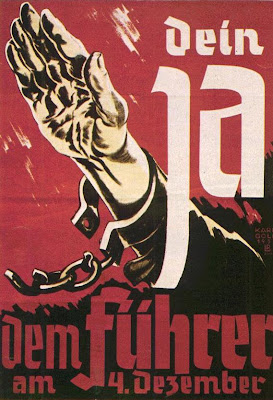
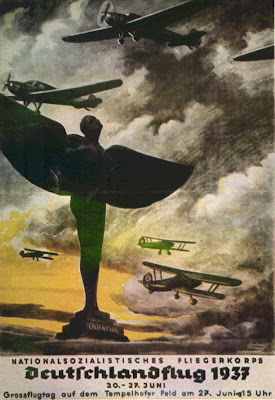
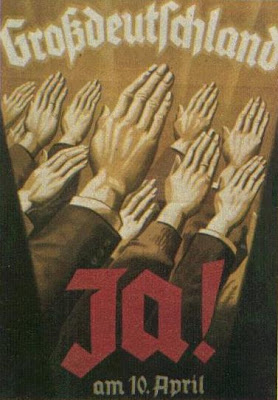
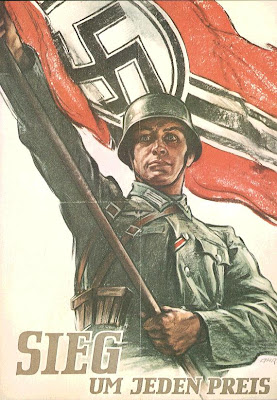
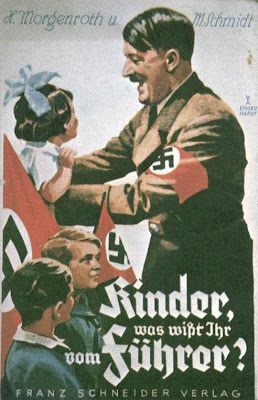
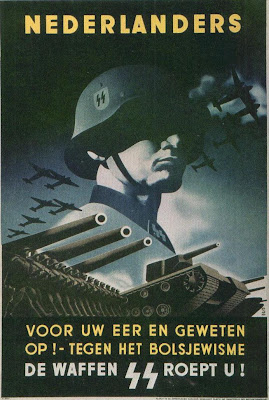
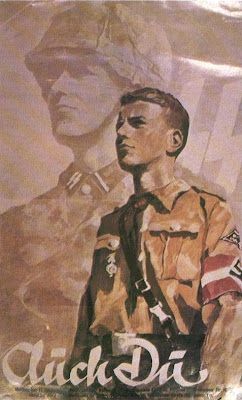
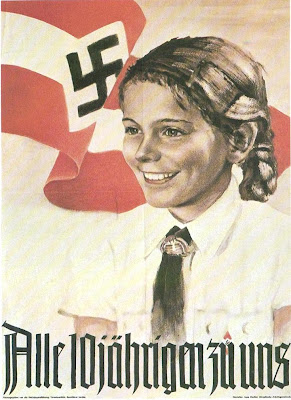
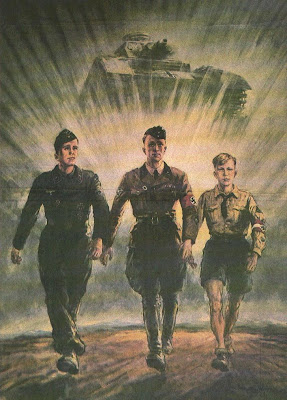
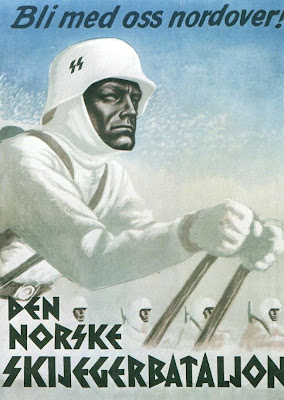
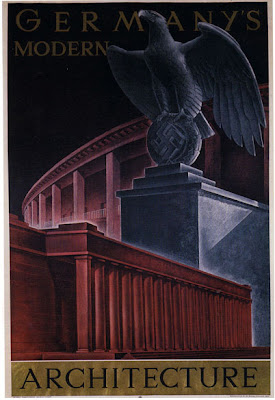
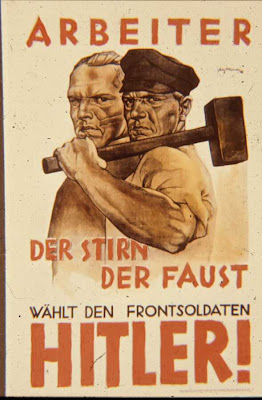
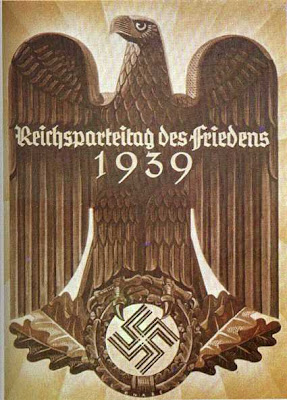
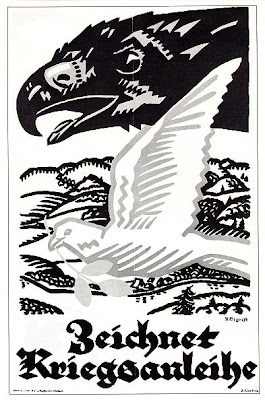

>gal få et liv, eller join the army.
>I can honestly say you're a freak. Nazi Germany only produced horror and shame for themselves. For you to say the propaganda they produced is anything less than EVIL is pathetic. You should be ashamed of yourself. They killed babies by bashing them against walls, raped Jewish women then killed them "as no to pollute the race", starved innocent people to death claiming it was "natural causes". You are sick. The Nazis and thier collaborators were the mose cowardly figures in history. Anything and everything they produced was and is just as worhtless as you. Let the record show that your approval and adoration at the fact that Geobbles led a jazz orchestra just proves futher my assumption that you have lost your humanity completely. He was in the bunker with Hitler until the very end, having his wife murder thier 6 children, ages 5-13, then herself. Not someone I would admire. Freaking idiot.